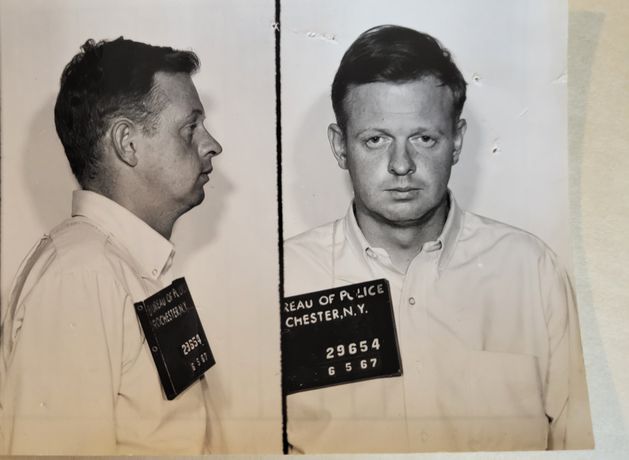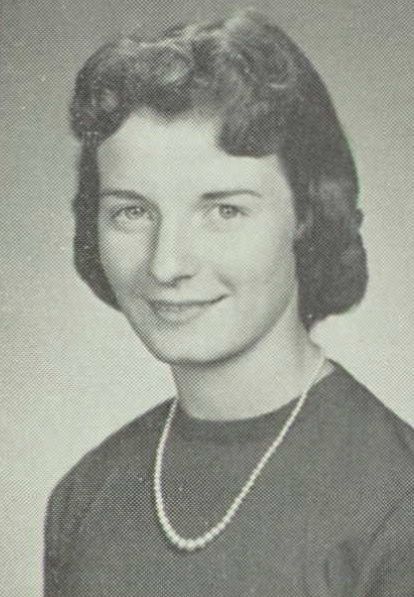His luck was escaping justice twice for the murder of his wife, June, the mother of two of his children, in upstate New York in 1967. The smart part was that he created multiple identities; lying, cheating, stealing and deceiving his way to freedom.
His first escape led him to a life in Ireland under a new identity for nearly 20 years. His second was a failure of the extradition process in Ireland which led to his second break for freedom and decades more on the run.
To say this man made a great subject for a podcast series is an understatement. The fact the case was never closed and Joe Maloney seemingly disappeared into the ether for half a century made it a tale we couldn’t resist telling.
The story was also one of seeking justice for the victim of a truly horrific crime, a killing that had followed years of domestic violence and coercive control. We wanted to know was this man still alive? If he was, where was he since he fled Ireland in 1986? And what happened to their children he left behind and whose family he tore apart.
Tim Desmond, producer of RTÉ Documentary on One true crime podcast ‘Runaway Joe’
Knowing what we believed the story to be, the RTÉ Documentary on One team set about working with journalist Pavel Barter over the course of a year-and-a-half to bring the series to listeners.
We began our process by speaking to a wide range of people who had come into contact with Maloney through their professional work.
Retired district court judge Gillian Hussey recounted in her memoir, Lessons from the Bench, the task she had of presiding over what she described as “a very unusual case” in 1985, when authorities attempted to extradite this man back to the US to stand trial for the murder of his wife.
That’s where Pavel first encountered the story. Reports in the US media from 1967 gave us the names of people who knew June, and despite the passage of time, many were willing to talk.
And Wendy Lehmann, a long-retired assistant district attorney for Monroe County in New York, tried hard to get Maloney extradited to face justice at the time and was able to give us access (albeit in a limited way; this was still an open case) to many police and witness statements from the original case.
With this kind of way in, we could bring the listener back to the beginning of the story in the city of Rochester, New York, in the spring of 1967.
Joseph Michael Maloney was separated from his wife June Fisk. They had two children, Joey Jr and Patty Ann. June was a nurse and was beginning to make a new life for herself away from Joe. Maloney was violent and controlling and made life very difficult for June and the children.
This came to a head at a birthday party for Joey Jr, who turned five in May of 1967. June’s drink was poisoned with methanol at the party and she died an agonising death two weeks later.
June Fisk, who was murdered by her ex-husband Joe Maloney in 1967
Maloney was charged with first degree murder. He managed to persuade the judge to transfer him to a psychiatric hospital. This was a smart move. Nobody realised Maloney had previously worked at the hospital, and he escaped with ease.
By 1968, Maloney had arrived in Ireland where he lived under the assumed identity of Michael O’Shea. In 1974, he married a Dublin woman, Sheila Chandler.
The gardaí in Dún Laoghaire kept a close eye on him
Maloney got lucky again in the mid 1970s when a garage he owned was in the way of the new Dún Laoghaire shopping centre. The compensation he received to get out helped the fugitive to buy a large country estate, Capard, Co Laois. This allowed Maloney (now O’Shea) to live the life of a country squire between the country and the Dublin suburb of Dalkey.
However, the gardaí in Dún Laoghaire kept a close eye on him, as they seemed to know there was something off. In 1973, gardaí confirmed their suspicions and managed to take his fingerprints. They discovered he was a fugitive wanted by the FBI.
The FBI and the gardaí couldn’t arrest him, however, because his charges were in the US and there was no extradition treaty. So they watched him for another 12 years, until in 1985 a treaty was in place.
When the go-ahead was given for his extradition, it was Garda Superintendent John Mulderrig who arrested Maloney. And as Maloney awaited his fate in Mountjoy Prison, his chaplain and friend, Bishop Michael Cox, regularly met him. Both the Superintendent and the Bishop tell of how cunning Maloney was and how he tried every trick to persuade them and his wide circle of friends he was an innocent man.
He had a broad enough circle of business associates in Ireland. While many of them had no problem talking to us, some were already dead and gone and a few decided to keep very quiet.
By mid 1986, after more than a year on remand, the extradition treaty with the US temporarily fell through and Maloney was released. And that was the last time anyone would ever see him.
There were two big moments for the team during the production process. The first came as soon as we began to publish the podcast. We appealed for listeners who knew anything to come forward and suddenly people we hadn’t already come across but who had dealt with Maloney began to get in touch.
As our team talked to each of them, the tips we received fleshed out our knowledge of this man, his story and his time in Ireland. He was a thief, he didn’t pay his bills, he was entertaining, charismatic, interested in military history. He told a lot of stories. Some people liked him a lot, others were ripped off and abused by him.
The last known photograph of Joe Maloney
For us, this was a big moment. Maloney had cleverly convinced a lot of people that he was innocent, so much so that when he left Ireland in 1986, people who knew where he went stayed very quiet. We had some information but nothing definitive to close the case, as it were.
During the 18 months we were recording, we were given good information that Maloney and his wife Sheila relocated to places without extradition to the US, initially East Berlin, then on to northern Cyprus in the 1990s.
If he wasn’t still alive somewhere, we needed a time and place of death. We worked every lead, searching archives in Berlin and making contacts on the ground in Cyprus. It was slow and the episodes were now releasing weekly.
We also hadn’t made progress on the fate of the two children June had with Maloney. We knew that after their mother was murdered and their father went on the run, they had been swept up into the US adoption system with their names and identities changed, making them near impossible to track down.
A few episodes into the series and with some good tips coming in from Ireland, we were asked to appear on a local NPR radio station in Rochester.
We were joined by Wendy Lehmann and by a very old friend of June’s, Wanda, who had been looking after June’s children when the murder happened.
A front page article also appeared in the Rochester Democrat and Chronicle. We really didn’t expect what happened next. If you haven’t listened to the series, I suggest you stop reading now. This is a serious spoiler alert.
It’s enough to say that the final episode of the series is the most satisfying of all, for us the production team, and we’re told for the listeners and the other contributors. It was through Joe Maloney’s wife’s family that we finally found out his fate.
It’s fair to say his luck ran out. But the real closure in this story is that 57 years after Joe Maloney tore his family apart, this podcast managed to put it back together again – and a new future is just beginning.
Tim Desmond is the producer of ‘Runaway Joe’; rte.ie/runawayjoe



